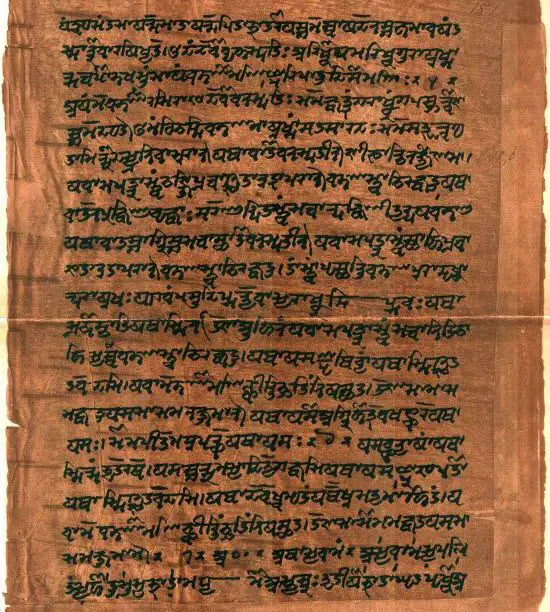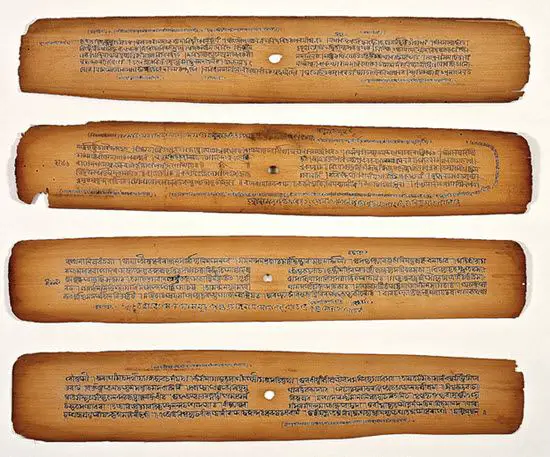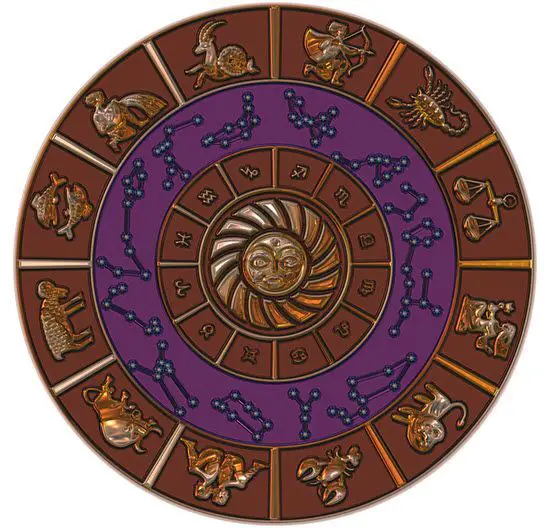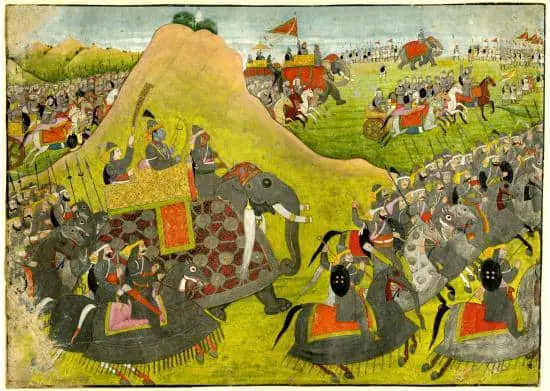The Vedas are the oldest religious texts of the Hindus. In fact, the Vedas are regarded as the world’s oldest piece of literature.
It is believed that the Veda have composed several thousands of years ago. They were written down by several seers known as “Rishis” in the Hindu tradition. The Vedas were composed in Sanskrit and contain hymns describing the glories of God. They include material, religious, and spiritual knowledge.
Moreover, the expression “Vedic” is taken from the Sanskrit word “Veda” which stands for knowledge or revelation. Thus, Vedas are the books of knowledge that express religious and spiritual beliefs of the Hindus.
In fact, Hindus maintain that Vedas are eternal and exist eternally in the higher realms of the world called as “Brahman.” They manifest at the start of every cycle of creation for the well-being of the world. Vedas help humans to attain their eternal state and rise from their embodied, limited state as liberated souls.
As Vedas contain hymns dedicated to Gods, it is believed that they invoke the power of Gods to help humans with their problems of the mortal world, disease, and death. They are an invaluable source of knowledge for the material as well as the spiritual well-being of humans on earth.
Table of Contents
What are Vedas?
In fact, the word “Veda” is derived from the Sanskrit root “Vid” which means “to know.” So, Vedas literally means knowledge. If we go by the Hindu beliefs, it is said that Vedas were composed by several Rishis when they were in the state of deep meditation.
Moreover, Vedas were born under inspiration when seers deeply enquired about the very truth of existence. Hence, Vedas are not man-made, but the heard ones.
Hindus believe that God revealed the Vedas to the Rishis when they were in a state of deep meditation and prayed to God for eternal knowledge for the well-being of humans in the world.
Initially, the Veda were not written down but were transferred from one generation of Rishis to other by vocal means. So, Vedas are essentially the heard ones and were described as “Shruti.” It is only about 5000-7000 years ago that Vedas were penned down for the benefit of mankind. However, Vedas existed several thousands of years ago before being actually written in textual format.
The Vedas are huge religious texts and contain thousands of hymns. Each of the hymns contained in Vedas is long and is composed of several verses. In fact, Hinduism strives and advocates a balanced life aiming for the four goals of human life as Dharma, Artha, Kama, and Moksha.
This means that an individual should aim to fulfill the four essential aspects of life in the form of religious obligations, earning wealth, seeking pleasure, and finally go for achieving liberation.
In fact, Vedas are those books of knowledge that help people to attain these four goals in life. In the first half of life, humans should acquire knowledge, pursue material goals, and serve their family. In the latter half, they should pursue spiritual goals, lead an austere life and ascend to the abode of God. The Vedas help humans to attain all these endeavors.
The Four Vedas
The Vedas are four in number.
However, originally (in the beginning) there were only three Veda and were known as the “Triple Vedas” or “Vedatraya.” The fourth Veda was included subsequently.
The four Vedas are:
- The Rig Veda
- The Yajur Veda
- The Sama Veda
- The Atharva Veda
(They have been listed in the order of their composition)
Each Veda is subsequently divided into four parts, namely:
- The Samhitas
- The Brahmanas
- The Aranyakas
- The Upanishads
The Samhitas were the earliest composition and were followed by the Brahmanas. The Aranyakas and Upanishads came in the later Vedic era.
Rig Veda
“Rig” means ritual and the Rig Veda mainly contains hymns and prayers (Mantras) dedicated to the worship of the universal forces usually referred as Rig Vedic deities or demigods.
In fact, Rig Veda is regarded as the oldest religious text in the world. It has a collection of 1028 Vedic hymns in Sanskrit and as much as 10,600 verses in all which are organized into ten books known as mandalas. These were recited during sacrificial rites and other ceremonies with full devotion. It is said that the Rig Veda was composed around 1700 BC.
Yajur Veda
“Yajur” means ceremony and the Yajur Veda mainly describes the procedure of performing the rituals. It is the book of sacrificial prayers and describes the rituals used during Yajna. It is believed that they were composed between 1400 and 1000 BC.
Sama Veda
“Sama” means singing, and the Sama Veda contains descriptions about chanting the mantras in accordance with mystic vibrations. It has 1549 hymns which were sung during the soma sacrifice by special Brahmans known as “Udgatris.” There are hymns dedicated to Agni and Indra. It has three shakhas, namely:
• Kauthuma: Panchvish Brahmana
• The Jaiminiya: Jaiminiya Brahmana
• Rāvāyanīya: Shadvish Brahmana
Atharva Veda
“Atharva” means a priest who has the knowledge about the secret lore. The Atharva Veda contains vivid descriptions of different kinds of worship and invocations. It contains about 760 hymns of which 160 hymns are in common with the Rig Veda.
In the Vedic Era, it was not considered as a Veda, and it was only in late 1st millennium BC that Atharva Veda was accepted as a Veda. It is believed to have been compiled around 900 BC.
How old are Vedas?
Undoubtedly, Vedas are the oldest religious texts in the world.
However, unlike sacred texts of Christianity, Islam, and Buddhism that has definite historical dates assigned to them, there is no definite date that can be assigned to the composition of Vedas.
In fact, Hindus believe Vedas to be eternal. They regard Vedas as “Anadi” and “Nitya.” It is believed that Vedas manifest themselves after each Pralaya (deluge).
Moreover, the Rig Veda, which is the oldest amongst Veda, might be 7000 years old. Further up, Vedas existed long before they were finally written down in textual format. Originally, the knowledge of the Vedas was transferred from one generation to others by the ancient seers. So, Vedas should be much older than 7000 years.
However, if we go by Vedic hymns which mention Saraswati River to be actually flowing and existent, Vedas must be as old as the last time when Saraswati River actually flowed in India.
According to archeological research, Saraswati River dried up and disappeared in North India around 5000 BC. So, considering these findings, Vedas must be at least 7000 years old (5000 BC) when Saraswati River did flow across North India.
We take an excerpt from Rig Veda (Book 3: Hymn 23:4) where Saraswati River is described as actually flowing.
“On man, on Apaya, Agni! On the rivers Drsadvati, Saraswati, shine richly.”
Who wrote The Vedas?
It is a known fact that the Vedas, including Rig Veda, Yajur Veda, Sama Veda, and Atharva Veda have not been authored by a single writer. They are not the work of any single author.
In ancient times, there were many seers, sages, or rishis who lived simple, contemplative lives in the high altitudes of Himalayas and along the banks of sacred rivers. Some of the famous Rishis were Bhrigu, Angiras, Yajnavalkya, and Gargi.
These Rishis sought to understand the fundamental truths of life. They did intense penance and deep meditation, and inquired about – Why we are born? How did life happen on earth? How can humans live a good life? What is the real purpose of human life?
At last, they were able to discover answers to these profound questions. It is believed that God revealed these sacred truths to the sages when they were in the state of deep meditation.
The sages then composed hymns and texts expressing these universal truths in the Sanskrit language. These hymns containing sacred knowledge were passed from one generation to other, from teacher to student, by means of vocal transmission, chanting them aloud. These were not yet written down.
Eventually, all these hymns and texts were compiled by the great sage Vyasa into four collections which are now called as the Vedas.
Veda Mantras
Veda Mantra is a set of words composed of holy sounds that are mainly used during Puja, rituals, religious ceremonies, and Sadhanas. It is believed that chanting of Veda Mantras awakens the body’s natural healing mechanisms.
However, it is necessary to chant Vedic or Veda Mantras in the right and systematic way to get positive energy. Generally, Veda Mantras are required to be chanted between 10000 – 100000 times in a systematic way in order to derive any substantial benefits.
As Veda Mantras are energy based sounds, chanting of these sacred mantras are used for treating physical as well as mental illness. By chanting Veda Mantras in a correct and systematic way, one can attain God, peace, health, wealth, and luck.
One should get into the practice of chanting Veda Mantras with complete faith and belief. It is also recommended to practice chanting Veda Mantras under a learned Guru or Master.
What are Puranas?
The literal meaning of Puranas is “ancient, old”.
It is a vast genre of Indian literature covering a wide range of topics such as myths, legends, as well as traditional lore. It is an ancient text written in Sanskrit giving a mythological account of ancient times.
In fact, many Puranas have been named after major Hindu deities such as Vishnu, Devi, and Shiva. The Purana literature contains diverse topics, including cosmology, genealogies of gods, goddesses, kings, heroes, sages, folk tales, theology, philosophy, pilgrimages, temples, and medicine.
The Puranas are anonymous texts and were written by many different writers over the centuries. The Puranas are considered as part of Smriti. There are 18 Maha Puranas and 18 Upa Puranas, containing over 400,000 verses.
It is believed that the first versions of Puranas were composed between the 3rd and 10th century CE. The Bhagavata Purana is regarded among the most celebrated text in the Purana genre.
So, that’s all from us in this presentation about The Vedas.
We hope that you are now more enlightened about what are Vedas. The holy Vedas are a source of immense knowledge and help us to attain peace and happiness. May the knowledge of Vedas enlighten the lives of each one of us.
If you liked the post, don’t forget to share it with your friends and colleagues. We welcome your valuable comments and suggestions.






